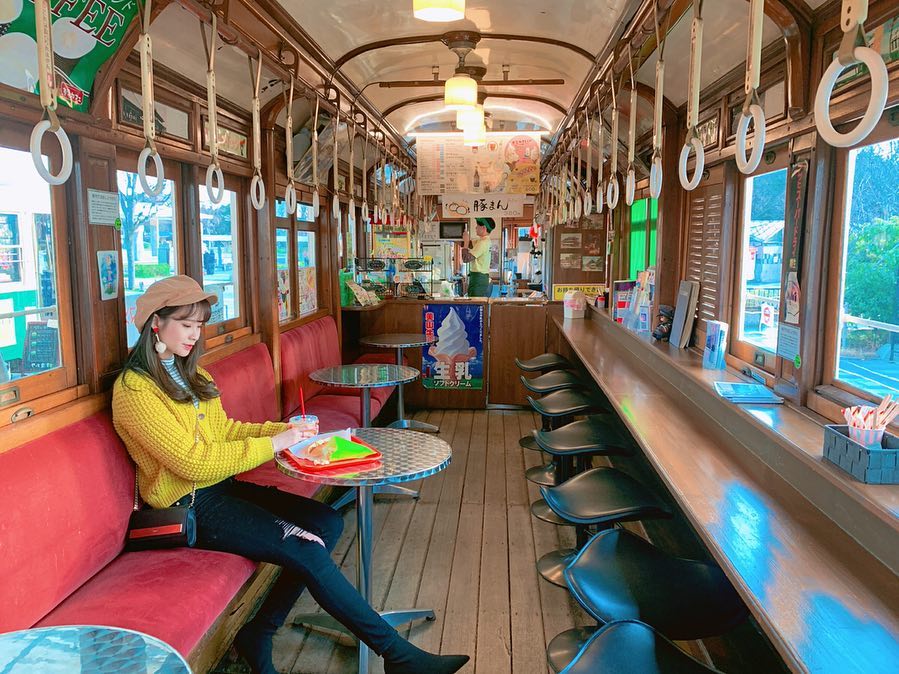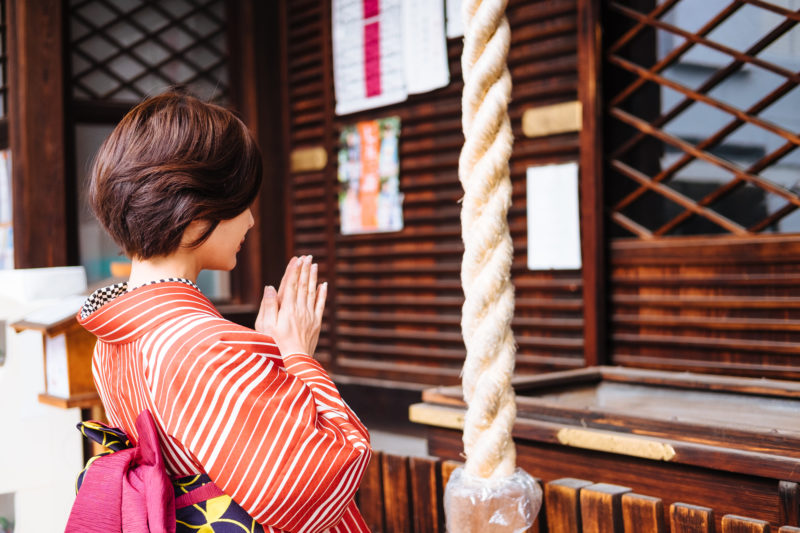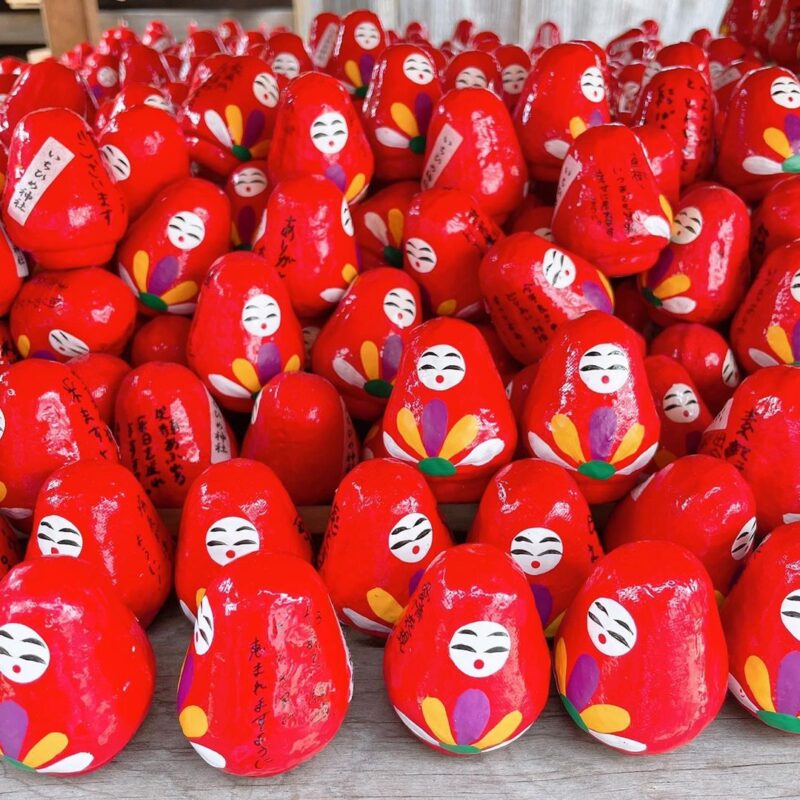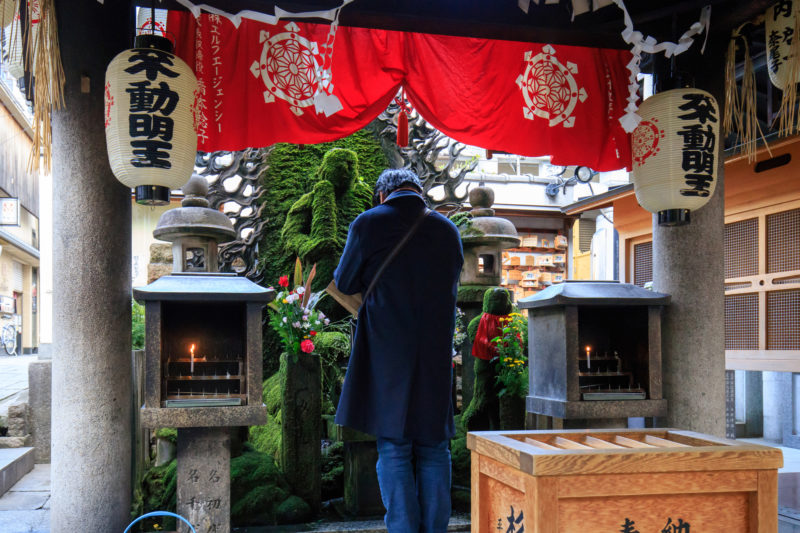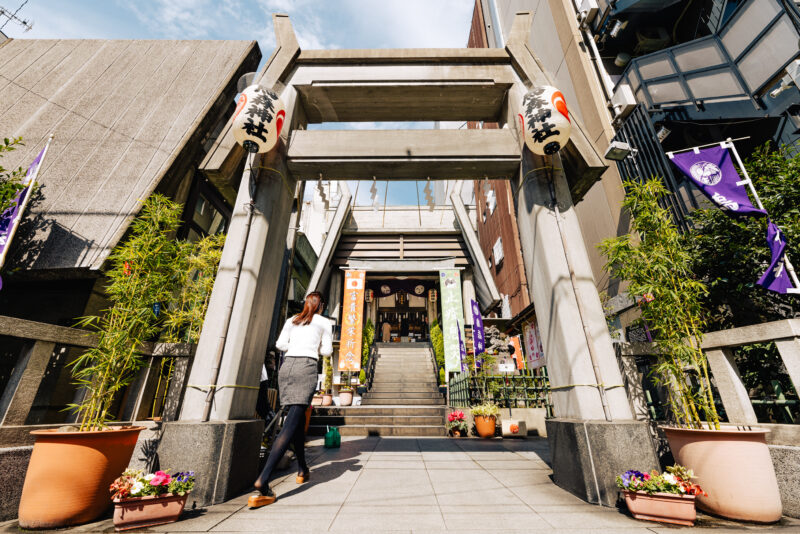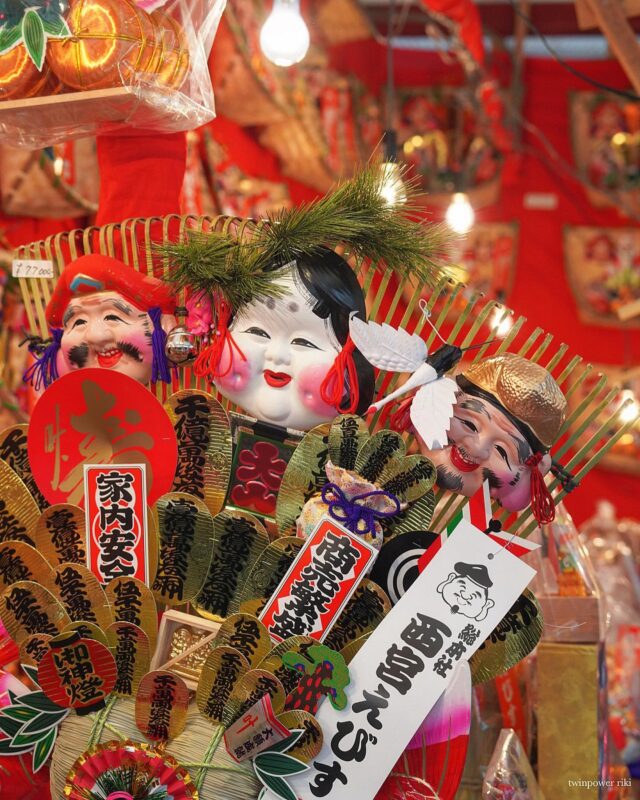Itinerary for drawing unique Omikuji in Kyoto City: 8 Recommended Shrines and Temples
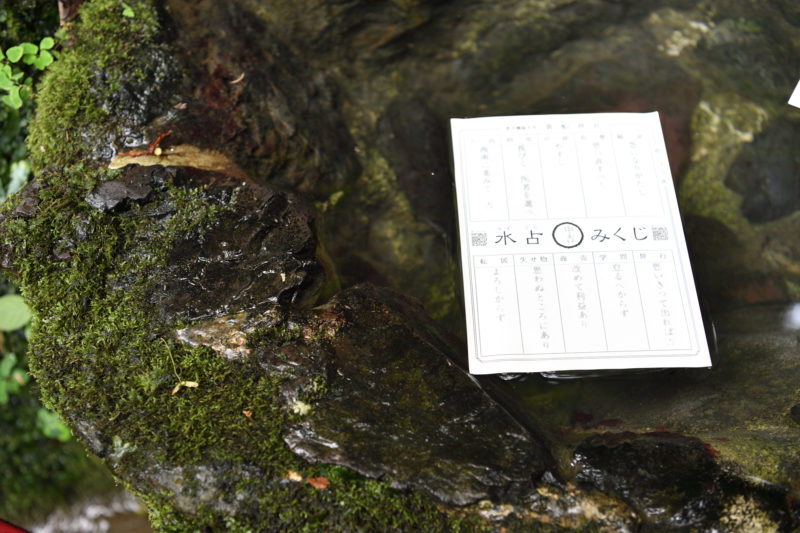
Kyoto Prefecture had been the capital of Japan for about 1,200 years since 794. As you know, it has lots of shrines and temples with a long history every part of this prefecture, such as ‘Fushimi Inari Shrine’ whose vermillion red torii gateways is popular as an Insta-worthy spot, ‘Kiyomizu Temple’ designated as a world heritage and “Rokuonji (Kinkakuji) Temple” completely covered in gold leaf. To our surprise, there are as many as over 4,300 officially registered ones. So, we think most of the visitors should feel it’s difficult to select places to visit. This time, we focused on temples and shrines where we can draw unique Omikuji (a fortune-telling slip), located in Kyoto city, Hotel Gracery Kyoto Sanjo’s location. We’re going to introduce 8 ones that are picked up from each of the five areas: Rakuchu, Rakuto, Rakusei, Rauhoku, Rakunan.
■Rakuchu (Central) Area
Pin your hopes for succeeding in love on pigeon-shaped Omikuji. -The origin of Japanese traditional flower arrangement “Chohoji Temple”
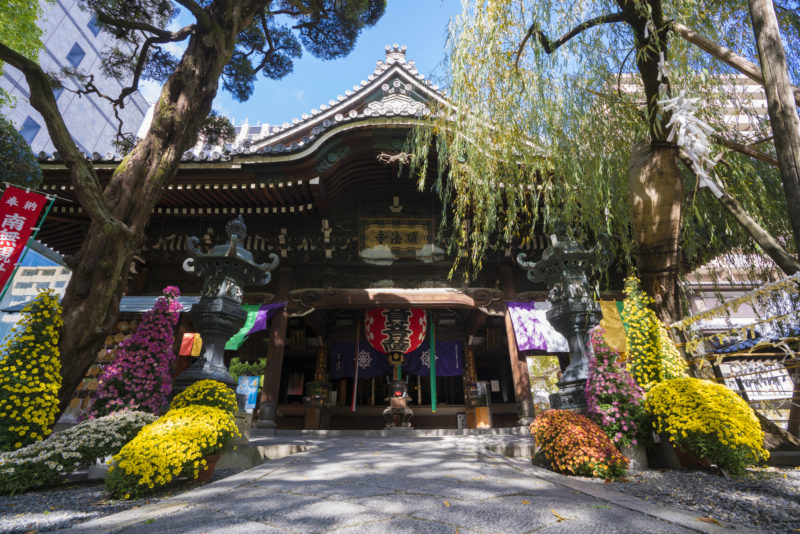
Due to the hexagonal shape of the main hall, “Chohoji Temple (頂法寺)” is lovingly nicknamed ‘Rokkaku(hexagonal)-san’ by local people. Built over 1,400 years ago, this temple is well known as the birthplace of Japanese traditional flower arrangement. Here, let’s try “Hato Mikuji” using pigeon, a symbol of good luck, as a motif! The pigeon is sitting on the perch of Omikuji. It’s believed that visitors will get good luck with love if they tie Omikuji to two branches of Rokkaku Yanagi (willow).
| Opening Hours | 6:00AM- 5:00PM *Except during the special period allowing visitors to enter here at night. |
| Address | Donomae-cho, Rokkaku-dori Higashinotoin Nishi-iru, Nakagyo-ku, Kyoto City, Kyoto Prefecture |
| Access | A 11-minute walk from Hotel Gracery Kyoto Sanjo |
| URL | http://www.ikenobo.jp/english/about/rokkakudo.html |
Try your luck at drawing Japanese Zodiac Omikuji. -“Kitano Tenmangu Shrine” enshrining the god of academics and the Ox giving wisdom
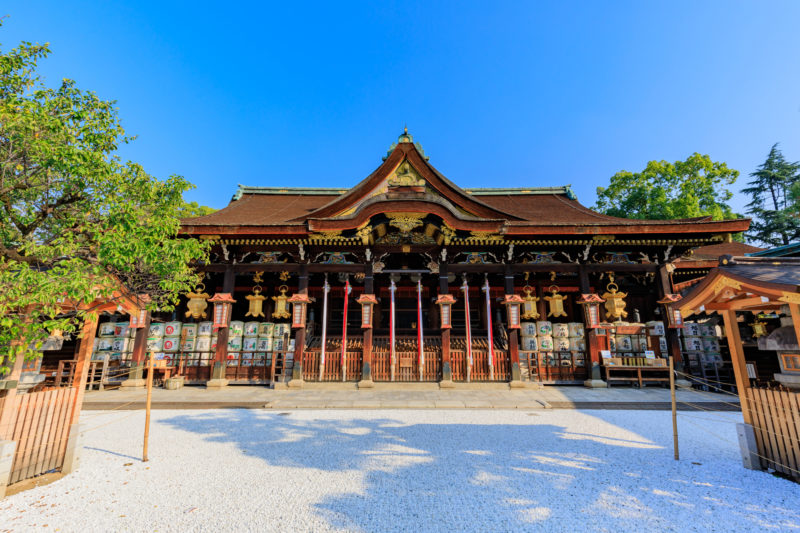
“Kitano Tenmangu Shrine (北野天満宮)” is the very first shrine in Japanese history where Michizane Sugawara was enshrined as a deity of academics. It’s also famous for having 10 and more statues of cows, the messenger of a god because he was born in the year of the Ox, one of Japanese Zodiac. Thus, they offer Omikuji related to the zodiac. Don’t miss a chance to get “Fuku Mikuji” which contains fortune-telling in pottery shaped 12 kinds of animals. It might be a good idea to display these hand-sized animals painted in vivid color in your room as a lucky charm for New Year’s.
| Opening Hours | April to September 5:00AM – 6:00PM/October to March 5:30AM – 5:30PM ※Please check opening hours on the official website because it may vary depending on events. |
| Address | Bakurocho, Kamigyo-ku, Kyoto City, Kyoto Prefecture |
| Access | Close to Kitanotenmangu Bus Stop |
| URL | http://www.kitanotenmangu.or.jp/top_en.php |
■Rakuto (Eastern) Area
Daruma-shaped Omikuji with different designs depending on each one. -“Yoshida Shrine” famous for the Setsubun Festival protecting Kyoto from evil and disasters
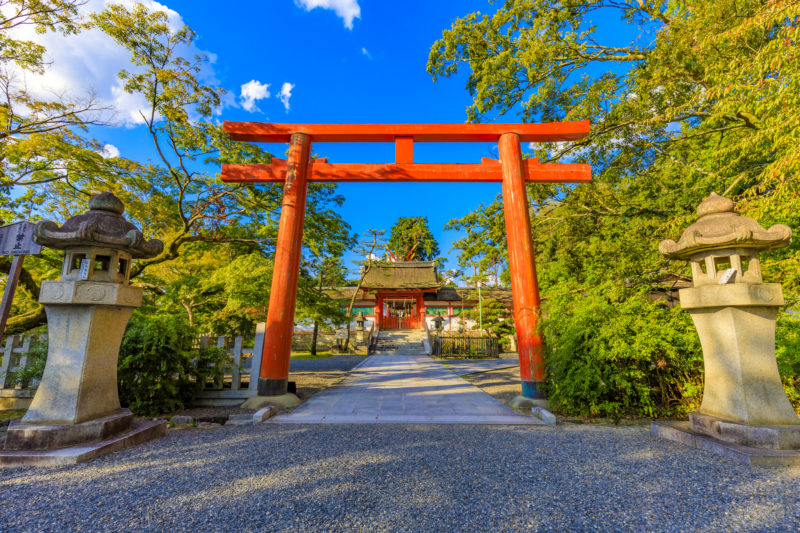
“Yoshida Shrine (吉田神社)” once played a role in protecting the gate of Japan’s ancient capital. During the period of Setsubun Festival every February, it’s filled with lots of people and about 800 food stalls standing on the approach to the main hall. Setsubun is the traditional Japanese event -people throw dried soybeans to people wearing demon masks. When you visit the main shrine, there is a large and bright red Daruma figurine with a strong presence, which is stuffed with a lot of Daruma shaped Omikuji around 5 cm. The body made by layering Japanese paper one by one, the handwritten facial expressions and the design of the stomach are very lovely, and each has a different design, so please choose your favorite one. On the bottom of the Omikuji, a demon sticker reminiscent of the Setsubun festival is put, giving you a feeling of the very shrine.
| Opening Hours | 9:00AM – 5:00PM |
| Address | 30 Yoshidakagura-cho, Sakyo-ku, Kyoto City, Kyoto Prefecture |
| Access | A 5-minute walk from Kyodaiseimonmae Bus Stop |
| URL | http://www.yoshidajinja.com/ |
Tiger shaped Omikuji with an affectionate expression giving you good healing. -“Kenninji Temple” located in Gion
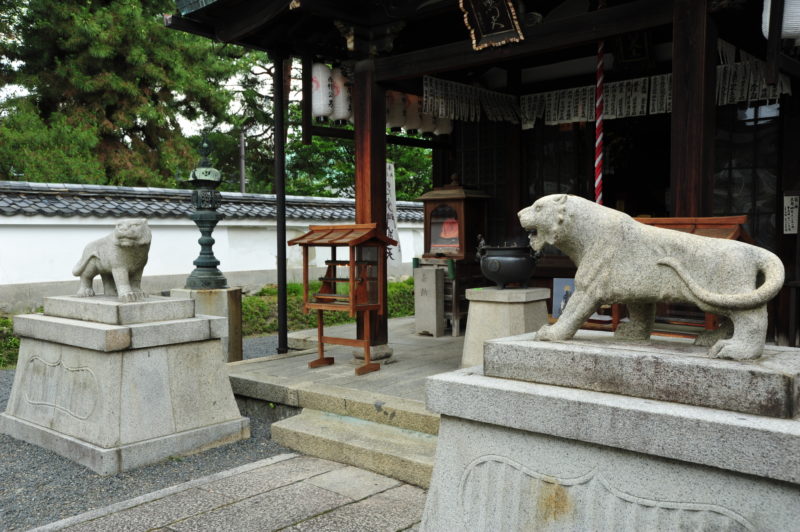
“Kenninji Temple(建仁寺)” is located on the south side of Hanamikoji-dori Street, the main street of Gion. Passing through the gates of the Ryosokuin Temple in Kenninji Temple’s precinct, you will find Bishamontendo Shrine whose entrance guarded by the two statues of tigers, the messenger of Bishamonten God. “Tora (tiger) Mikuji” also uses a tiger as a motif, and it has a chubby form contrasts with the dignified statues. There is another type of Omikuji, ‘Bishamonten Mikuji,’ so you may want to try both.
| Opening Hours | 10:00AM – 5:00PM ※Please check opening hours on the official website because it may vary depending on events. |
| Address | Komatsucho, Yamatoooji-dori Shijo-sagaru, Higashiyama-ku, Kyoto City, Kyoto Prefecture |
| Access | A 15-minute walk from Hotel Gracery Kyoto Sanjo |
| URL | https://www.kenninji.jp/english/ |
■Rakusei (Western) Area
The destination of the arrow determines your fortune! -One of the oldest shrines in Kyoto “Matsunoo Shrine” known as a god of booze
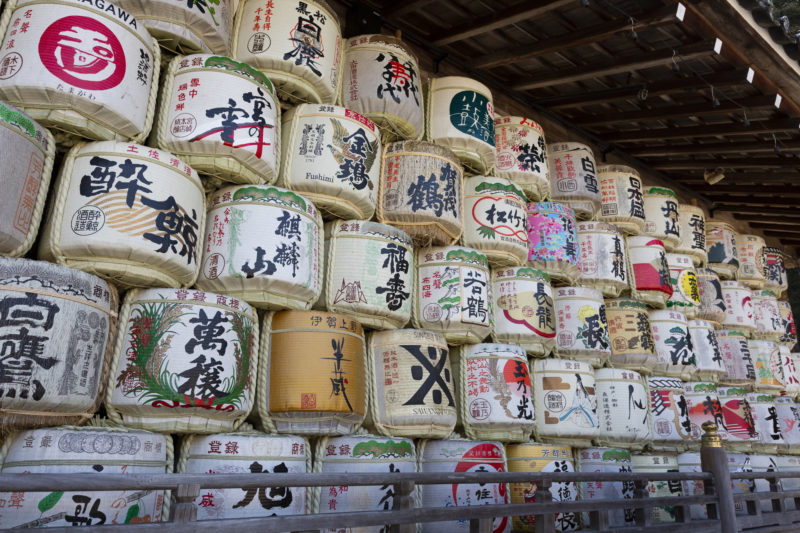
Located near Arashiyama, which is designated as a national historic spot and a scenic spot, “Matsunoo Shrine (松尾大社),” one of the oldest shrines in Kyoto, was built in 701. It originates from the fact that the clan that came from China in the 5th century worshiped the deity enshrined in Mt. The sake brewing technique handed down by the descendants of this clan has made Kyoto’s commerce flourish. For this reason, 100 sake casks dedicated from sake breweries all over Japan are displayed in the precinct. What doesn’t yield to them is “Shofuku-Taru fortune telling (招福樽うらない).” Throw arrows to three targets made by hollowing out sake casks, and how arrows fly tells you your fortune. Even if you make a mistake, you can get a charm. Why not try it without worrying?
| Opening Hours | Weekdays and Saturday 9:00AM – 4:00PM/Sunday and Holidays 9:00AM – 4:30PM |
| Address | 3 Arashiyama Miyamachi, Nishikyo-ku, Kyoto City, Kyoto Prefecture |
| Access | Close to Matsunoo Taisha Bus Stop |
| URL | http://www.matsunoo.or.jp/en/ |
■Rakuhoku (Northern) Area
Hear the words of gods by floating a piece of paper on the sacred water. -“Kifune Shrine” popular as a mountain retreat and photo spot
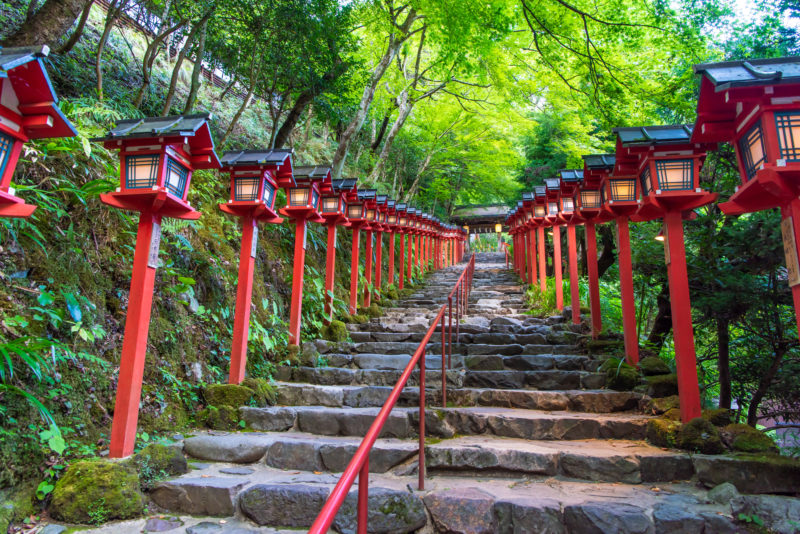
“Kifune Shrine (貴船神社)” is located at the foot of Mt. Kurama which is said to be a sacred place where Tengu (a long-nosed goblin) lives. Here, you can feel negative ion in the air because it’s surrounded by rich nature such as lush trees and the clear Kifune River. The god of water is enshrined and has been protecting the water of Kyoto by performing rain-related rituals for about 1,300 years. The Kifune Shrine’s Omikuji is “Mizuura Mikuji”. When floating a piece of blank paper on the sacred water, the letters showing your fortune come out.
| Opening Hours | 6:00AM – 8:00PM |
| Address | 180 Kuramakifune-cho, Sakyo-ku, Kyoto City, Kyoto Prefecture |
| Access | A 5-minute walk from Kifune Bus Stop |
| URL | http://kifunejinja.jp/ |
The peacock egg-shaped Omikuji makes you feel like opening a treasure chest. -“Tanaka Shrine,” a root of Tanaka-san
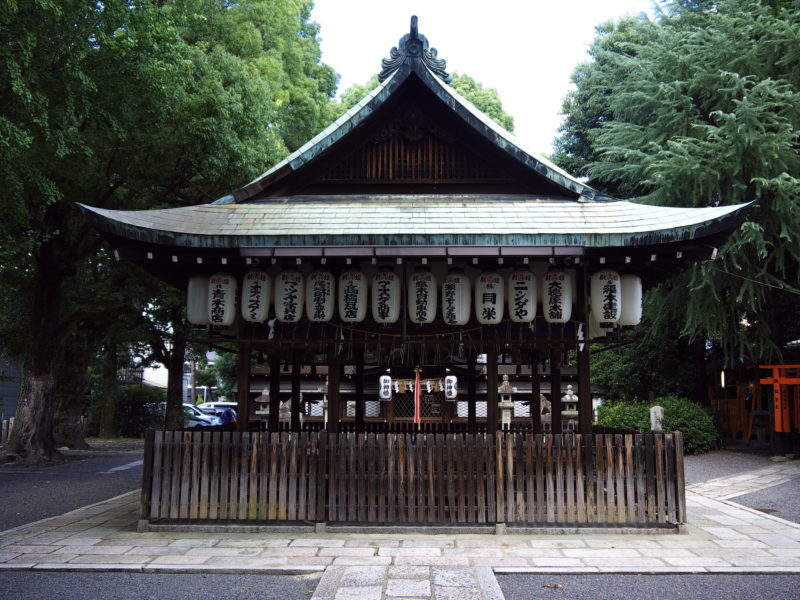
“Tanaka Shrine (田中神社)” is said to be the origin of the surname ‘Tanaka’ in about 1.38 million nationwide. A long time ago, there was a village called Tanaka Village around this shrine, and it started when the villagers worshiped as the guardian deity of the area. Currently, the gods of marriage and warding off evil are enshrined. In the precincts, a peacock with fine feathers welcomes you. Its Omikuji is “Kuja Mikuji” whose motif is the peacock egg. When you opening the eggshell, colorful paper-folding peacocks appear with fortune-telling paper.
| Opening Hours | Open 24 Hours |
| Address | 1 Tanaka Nishihinokuchi-cho, Sakyo-ku, Kyoto City, Kyoto Prefecture |
| Access | Close to Eiden Mototanaka Bus Stop |
| URL | https://ja.kyoto.travel/tourism/single02.php?category_id=9&tourism_id=140 |
■Rakunan (Southern) Area
White Horse shaped Omikuji brings good luck in competition. -“Fujinomori Shrine” visited by horse racing jockeys who are active in Japan
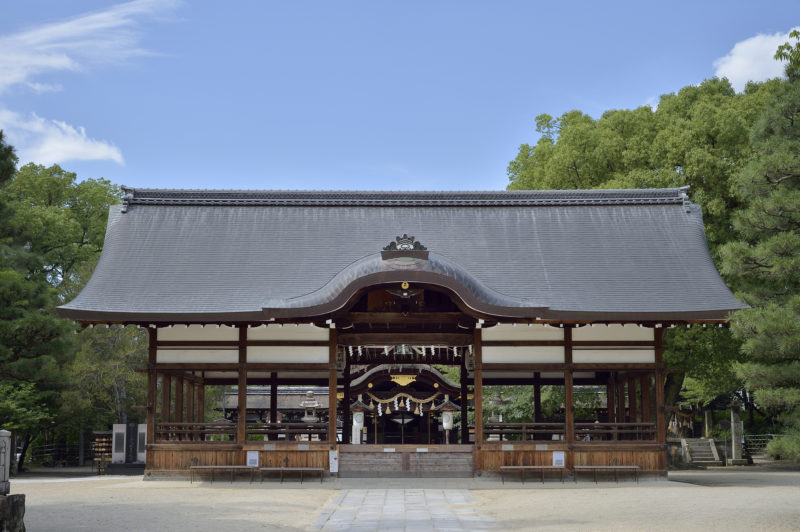
Japan has traditional customs at the turning points of each season -people pray for their health with plants and cuisines having the power to drive away evils. Built more than 1,200 years ago, “Fujinomori Shrine (藤森神社)” is a shrine that spread the use of irises for the festival of May. Irises is called ‘Shobu’ and Japanese people say games is Shobu, so it’s said that there is the god of victory. The precinct is filled with statues of horse and votive picture (Ema) and charms using horse racing as a motif. Of course, Omikuji is also put in a white horse shaped pottery. You probably may win if carrying them with it.
| Opening Hours | 9:00AM – 5:00PM |
| Address | 609 Fukakusa Toriizaki-cho, Fushimi-ku, Kyoto City, Kyoto Prefecture |
| Access | A 5-minute walk from Sumizome Station on the Keihan Main line |
| URL | http://www.fujinomorijinjya.or.jp/ |
Base of this trip

Hotel Gracery Kyoto Sanjo
5-min walk from Kyotoshiyakushomae station on the Tozai line
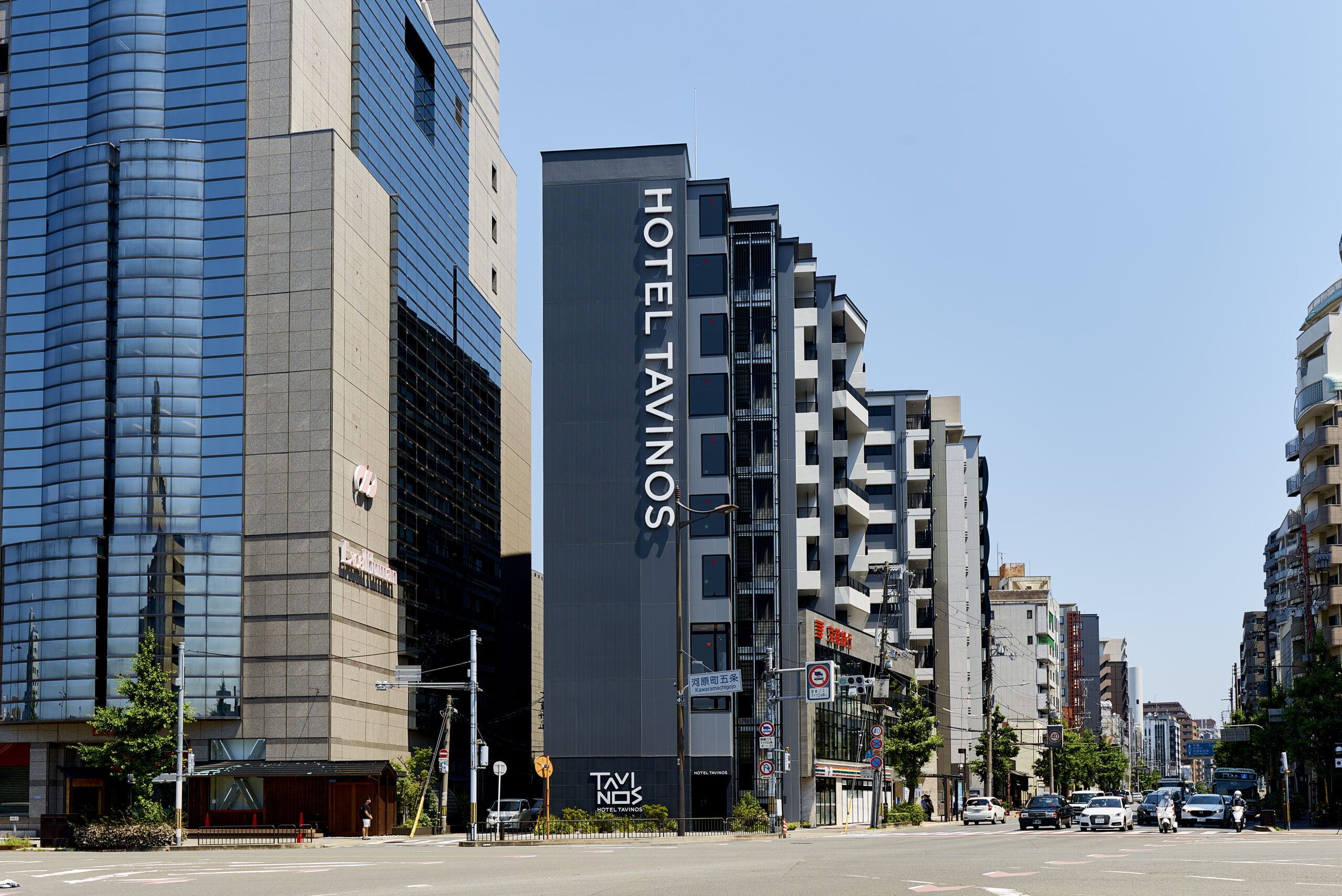
Hotel Tavinos Kyoto
3-min walk from Shimizu-Gojo station on the Keihan line/7-min walk from Gojo Station on the Karasuma line/10-min walk from Kyoto-Kawaramachi Station on the Hankyu Kyoto line
